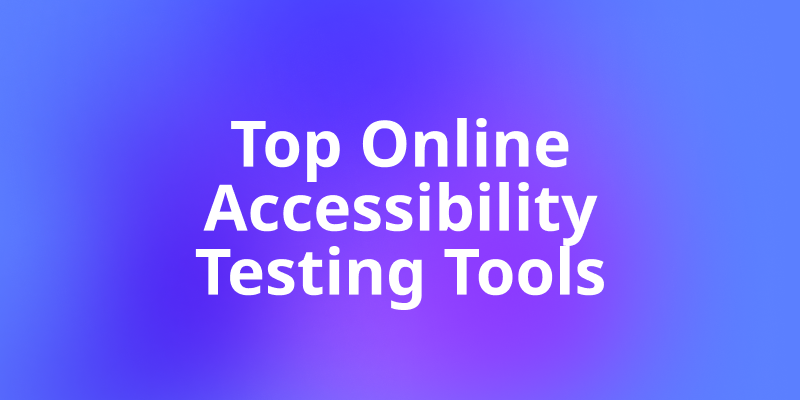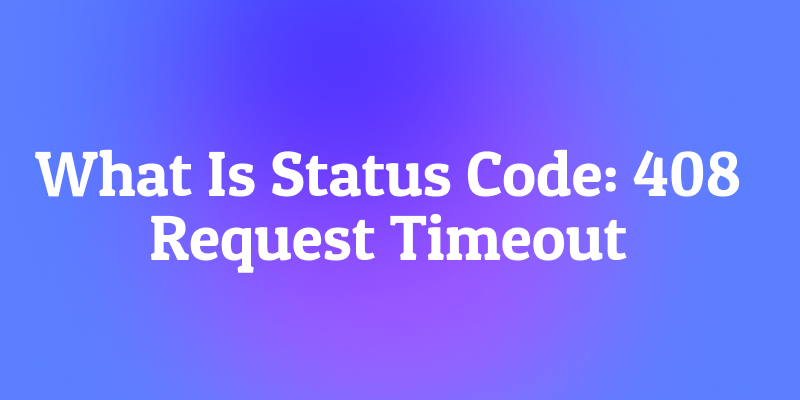Digital accessibility is no longer optional—it's a necessity. Websites and applications must be inclusive, ensuring that people with disabilities can navigate and interact with them easily. Accessibility testing helps identify barriers that could prevent users from accessing your content.
With the rise of online tools, it's easier than ever to test and improve accessibility without needing deep technical knowledge. Below, we’ve rounded up the top 6 online accessibility testing tools that can help you create more inclusive digital experiences.
Want an integrated, All-in-One platform for your Developer Team to work together with maximum productivity?
Apidog delivers all your demands, and replaces Postman at a much more affordable price!
Why Accessibility Matters?
Accessibility isn't just a buzzword anymore. It's a legal requirement in many countries, and lawsuits for inaccessible websites are on the rise. More importantly, inclusive design ensures that people with visual, auditory, motor, or cognitive impairments can interact with your content.
Plus, accessibility boosts SEO, improves usability for everyone, and gives your product a reputation for caring about people. In short, it’s not optional; it’s essential.
Manual accessibility testing is thorough but can be labor-intensive, costly, and error-prone when left entirely to human evaluators. Online tools offer several advantages:
- Speed: Automated scans instantly identify common problems.
- Consistency: Tools apply established guidelines systematically.
- Cost-effectiveness: Reduce dependency on expensive manual audits for routine checks.
- Continuous monitoring: Easily integrate accessibility scans into your CI/CD pipelines.
- Actionable reports: Prioritized issue lists to guide fixes.
Combine these tools with human judgment for the best results.
What is Online Accessibility Testing?
Accessibility testing is the practice of evaluating websites, applications, and digital content to ensure that people of all abilities, including those with visual, auditory, motor, or cognitive impairments, can access and use them effectively. Simply put, online accessibility testing is the process of using web-based tools to evaluate whether your website or app meets accessibility standards like WCAG 2.1(Web Content Accessibility Guidelines) or Section 508 compliance and other legal requirements. These tools flag issues like poor color contrast, missing alt text, improper heading structure, and ARIA misuse.
The beauty of online accessibility testing is that you don't need to install heavy software. Online accessibility testing tools automate part of this process by scanning your site or app and highlighting areas where accessibility barriers may exist. Many tools are browser-based, automated, and even integrate into your development workflow.
1. Axe by Deque Systems
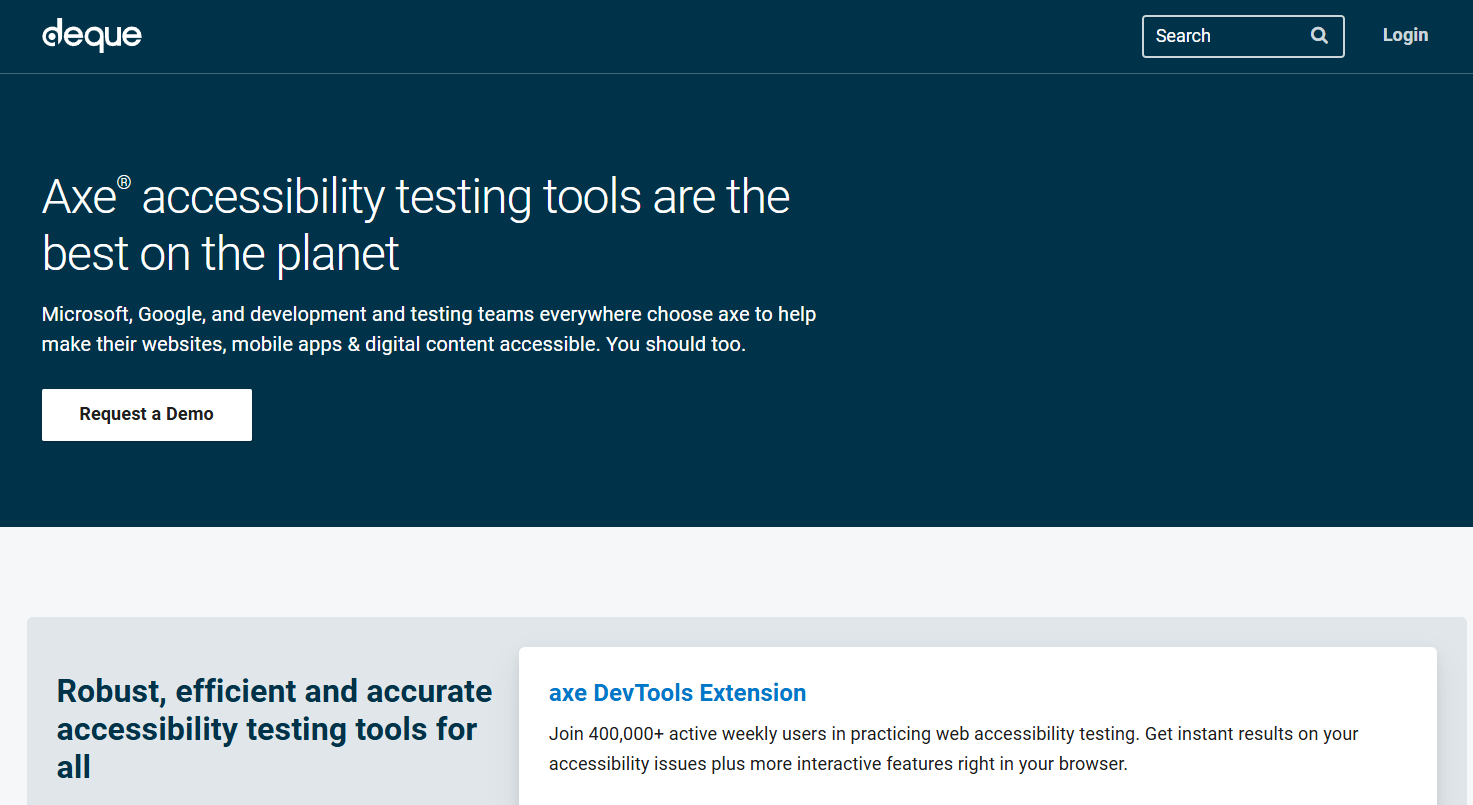
Axe is a leading accessibility testing tool known for its powerful automated scans and developer-friendly browser extensions. A widely trusted accessibility engine that integrates into browsers and CI/CD pipelines. It identifies issues grounded in WCAG standards instantly and provides explanations and remedies.
Features:
- Browser integration, supporting Chrome and Firefox.
- Developer tools plugin with actionable insights.
- Open-source core with enterprise options.
- Integrates seamlessly into automated testing pipelines.
Best for: Developers who want automated testing as part of their workflow.
2. WAVE (Web Accessibility Evaluation Tool)
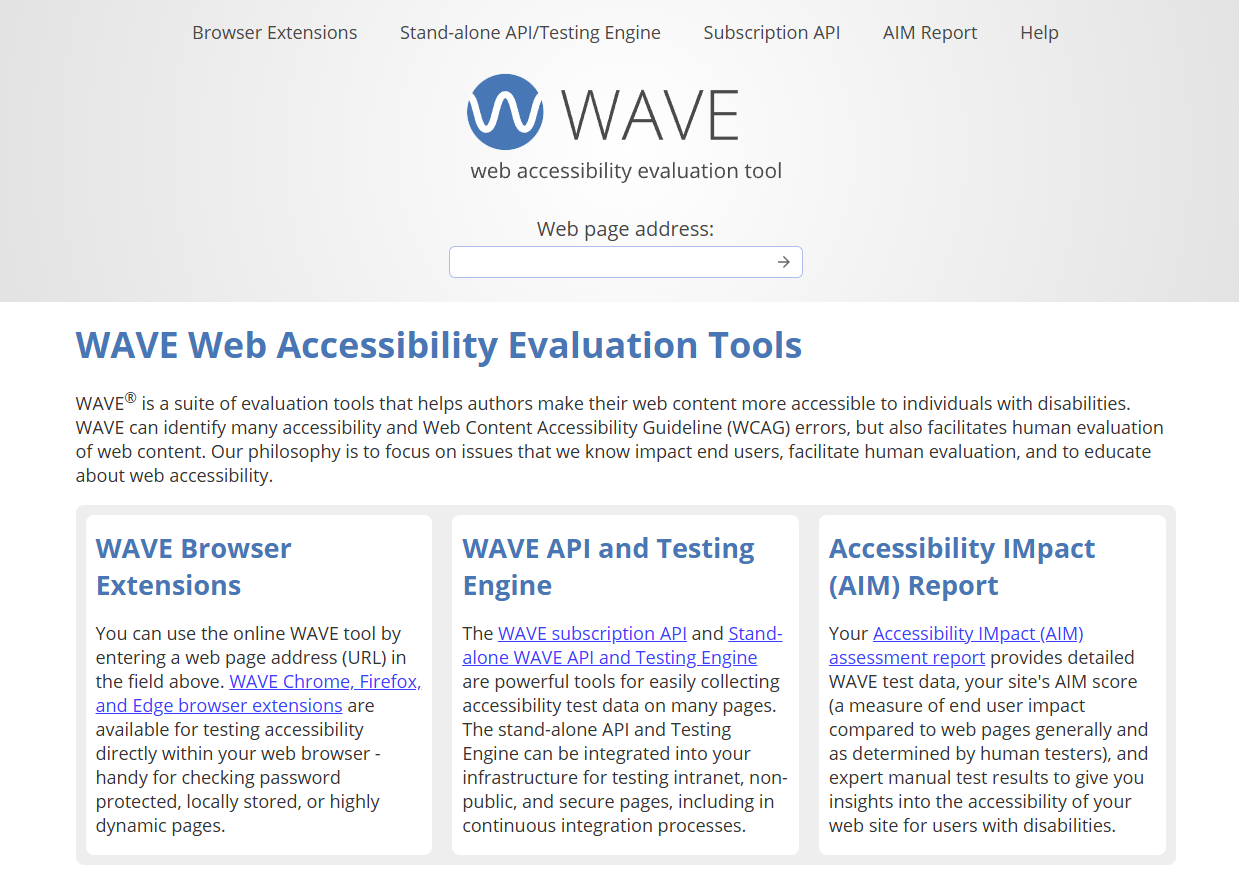
WAVE by WebAIM offers quick, visual feedback on accessibility issues directly within your webpage. A free tool that visually highlights accessibility issues directly on your webpage. It highlights errors, alerts, and structural elements to guide remediation.
Features:
- Free browser extensions for on-the-spot testing.
- Detailed visualizations of accessibility barriers.
- Contrast analysis and ARIA label checks.
- Super easy to use (just enter a URL).
- Provides visual feedback with icons and indicators.
- Detects common errors like missing alt attributes or ARIA misuse.
Best for: Beginners who want a quick overview of their site’s accessibility.
3. Lighthouse
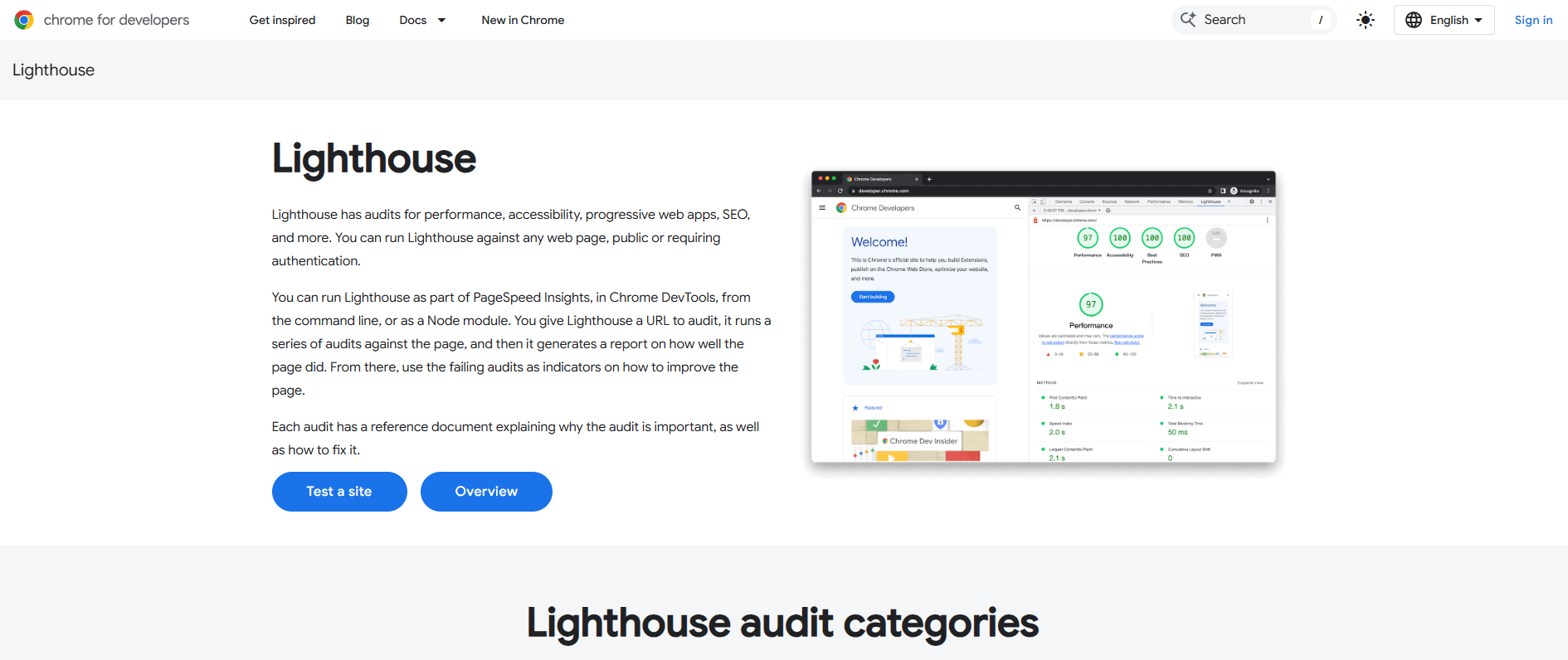
An open-source, automated tool developed by Google that audits performance, Lighthouse assesses website accessibility along with performance, SEO, accessibility and other best practices. It’s integrated into Chrome DevTools for easy access.
Features:
- Comprehensive accessibility audits with scores and issue reports.
- Integration with CI/CD pipelines.
- Customizable checks based on project needs.
- One-click audits inside Chrome.
- Scores your accessibility out of 100.
- Provides actionable recommendations.
Best for: Developers who want a broader view of web quality, not just accessibility.
4. Tenon.io
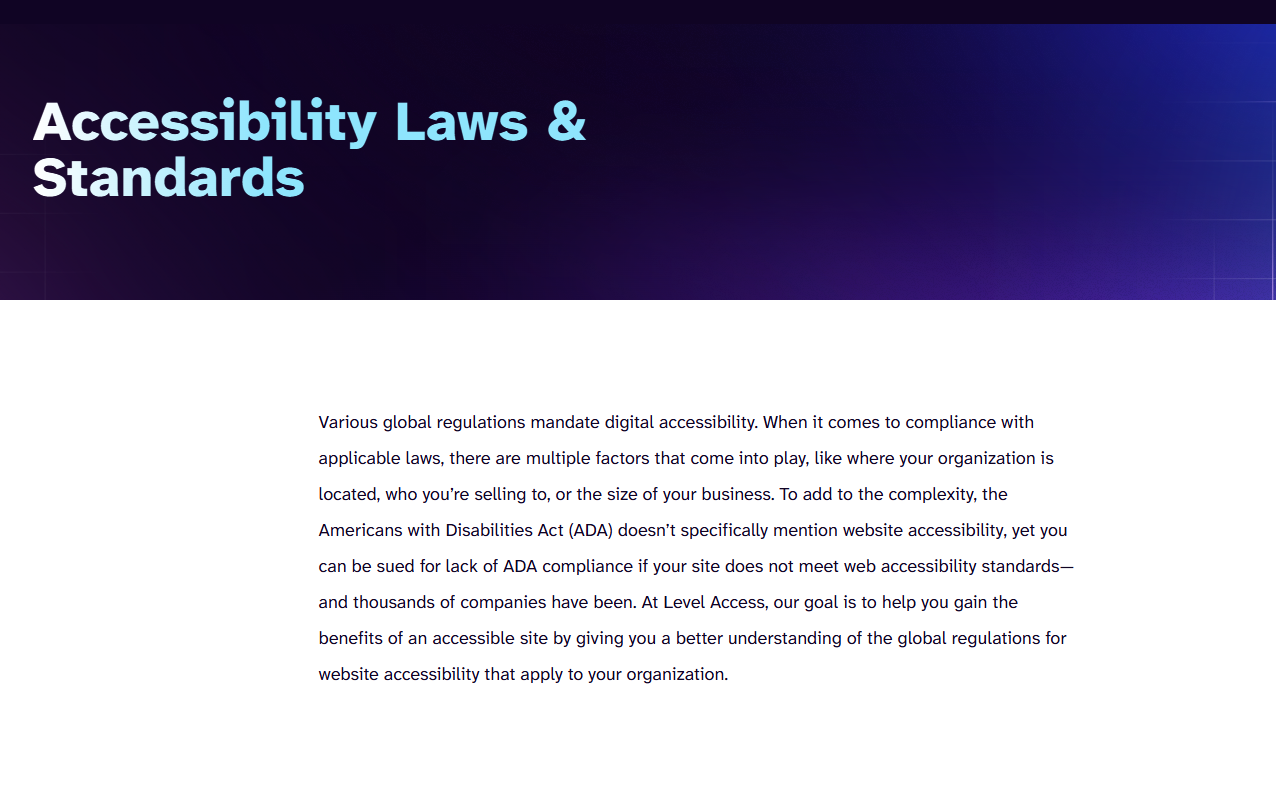
Tenon.io focuses on integrating accessibility testing into developer workflows and supports testing for dynamic web apps and APIs. A commercial accessibility testing service with API integration.
Features:
- API-driven for integration with your development, existing testing tools and workflows.
- Supports WCAG 2.1 AA compliance.
- Customizable test parameters and detailed issue reporting and remediation suggestions.
- Highly customizable reports.
Best for: Teams who need enterprise-grade accessibility testing.
5. Siteimprove Accessibility Checker
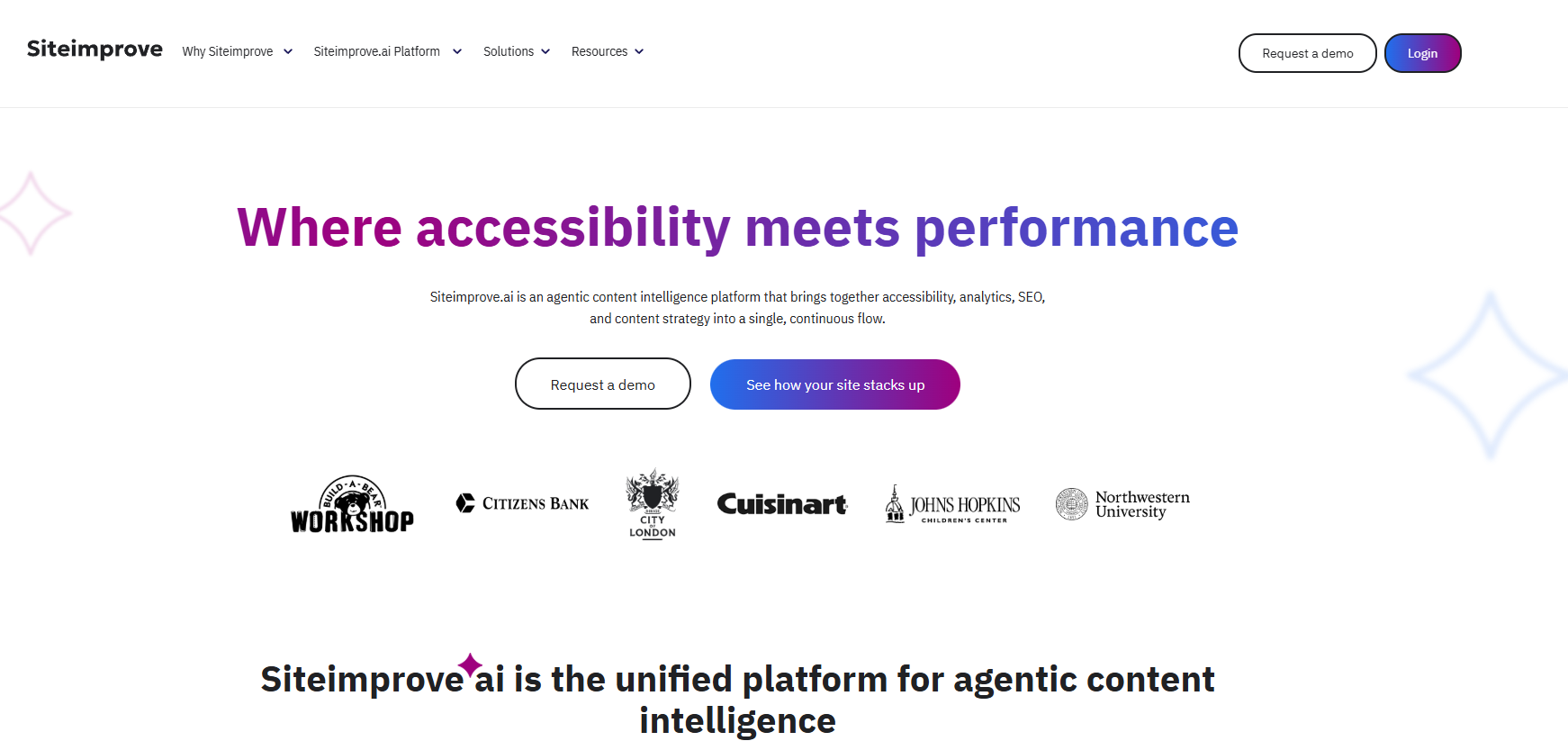
Siteimprove a Chrome extension that evaluates content directly in the browser offers scalable accessibility testing with an emphasis on content governance and ongoing monitoring for enterprise clients.
Features:
- Continuous site scans with alerting and compliance tracking.
- Role-based dashboards for team collaboration.
- Integration with CMS and analytics tools.
- User-friendly for non-technical users.
- Offers step-by-step remediation advice.
- Connects to Siteimprove’s larger suite for SEO and analytics.
Best for: Content teams and marketers who want accessibility insights without coding.
6. UserWay
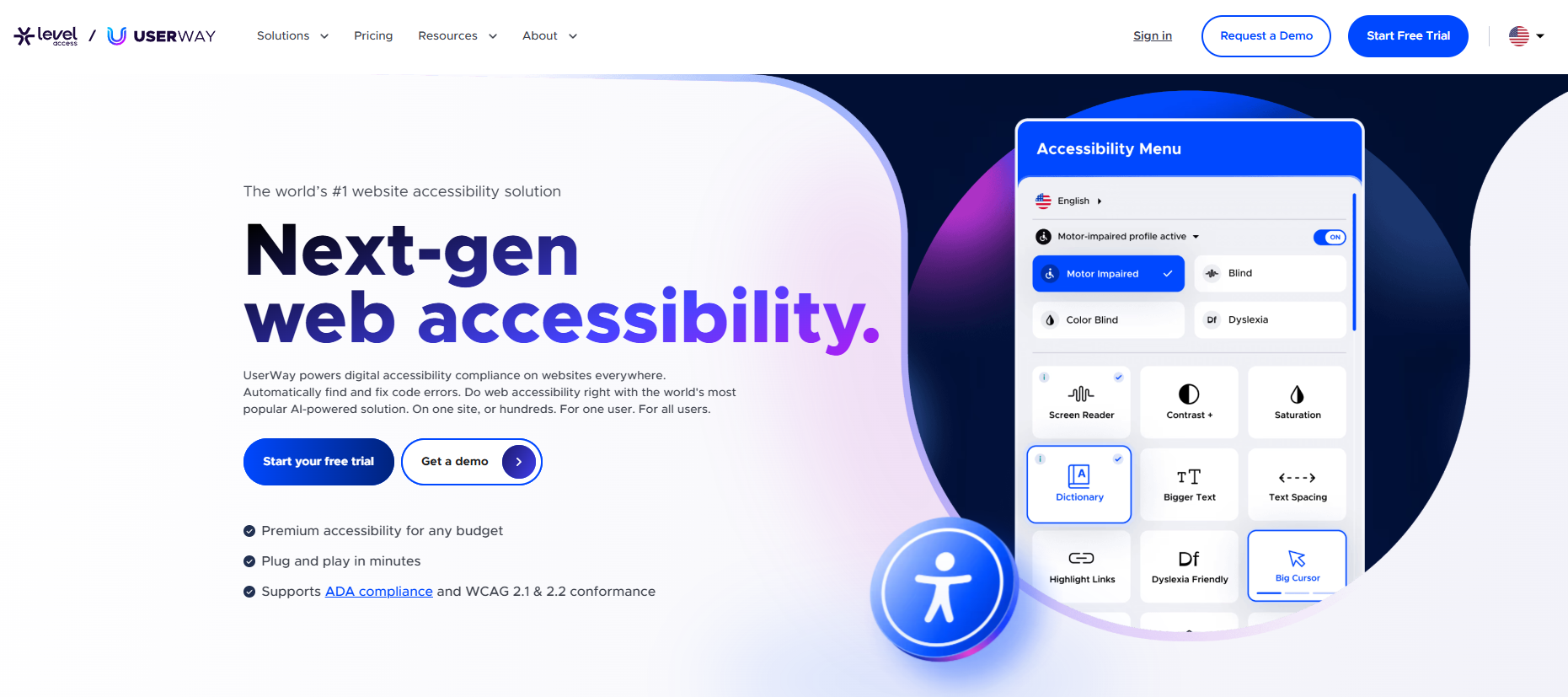
UserWay provides a combination of an accessibility widget and automated testing to help businesses improve compliance and user experience.
Features:
- Accessibility widget for real-time fixes.
- Automated scanning for common issues.
- Easy implementation and monitoring.
Bonus Tool: Apidog
While not a traditional accessibility checker like WAVE or axe, Apidog plays a crucial role in ensuring accessibility at the API level. Many web and mobile applications rely heavily on APIs to deliver content and functionality. If those APIs are inconsistent, poorly structured, or unreliable, accessibility features such as screen readers may fail to interpret the data correctly.
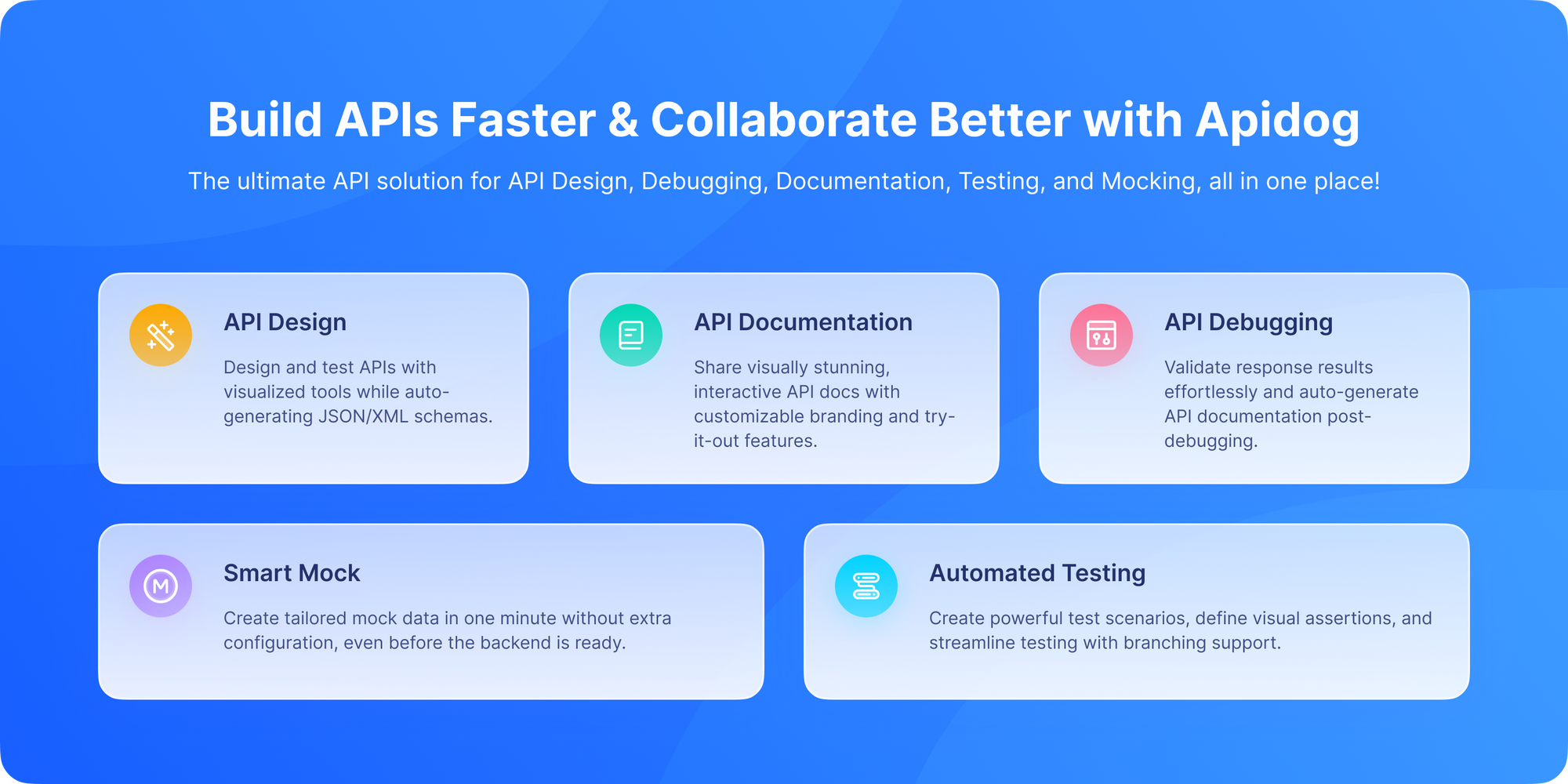
How Apidog Connects to Accessibility:
Accessibility isn’t just about what users see on the screen—it’s also about the quality of the data flowing into the frontend. Apidog ensures your APIs deliver clean, structured, and reliable information, which is essential for assistive technologies to work properly.
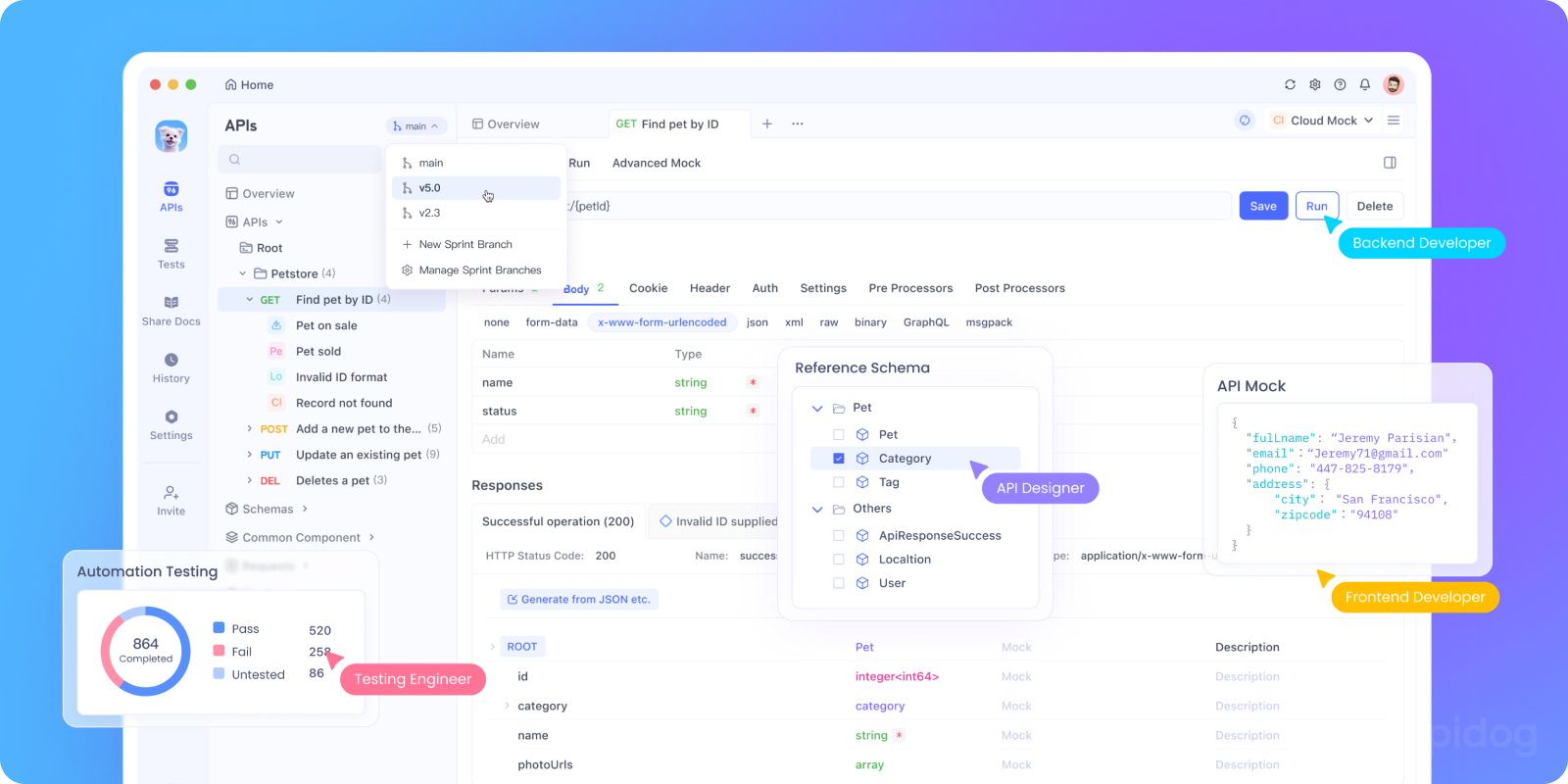
With features like:
- Visual API design and automated testing,
- Mock servers for early frontend-backend integration,
- Real-time monitoring to catch regressions,
Apidog complements tools like WAVE and axe by validating the backend foundation of accessibility. Together, they help teams build products that are not only compliant but also truly inclusive.
Benefits of Using Accessibility Testing Tools
- Catch Issues Early: Prevent lawsuits and compliance headaches.
- Save Money: Fixing issues during development is cheaper than post-release fixes.
- Boost SEO: Search engines reward accessible content.
- Expand Your Audience: Make your site usable by millions more people.
- Improve User Experience for Everyone: Accessibility features often benefit all users, not just those with disabilities.
Tips for Effective Accessibility Testing
- Combine automated and manual testing: Automated tools catch common issues; manual checks provide context and judge usability.
- Test with real users: Include people with disabilities in usability tests.
- Use varied tools: Different tools catch different types of issues.
- Incorporate testing early: Build accessibility into your development and design process continuously.
- Monitor and iterate: Accessibility isn't a one-time fix; keep improving with ongoing audits.
Final Thoughts
Accessibility testing is essential for creating digital experiences that everyone can use, regardless of ability. While tools like WAVE, Axe, and Siteimprove help identify and fix frontend accessibility issues, it’s equally important to ensure that the underlying APIs deliver clean, consistent, and structured data.
By combining traditional accessibility checkers with API-focused tools like Apidog, teams can address accessibility from both the frontend and backend, creating a truly inclusive experience.
Investing in accessibility testing not only improves compliance with standards like WCAG and Section 508, but also broadens your audience, enhances usability, and strengthens your brand reputation.
In short: Accessibility is not just a feature—it’s a commitment to inclusion. Leveraging the right tools ensures your digital products are accessible, reliable, and user-friendly for everyone.
